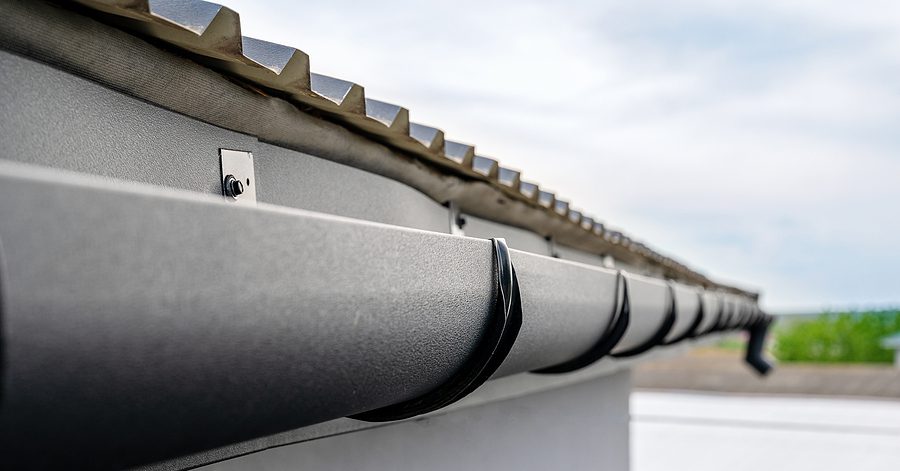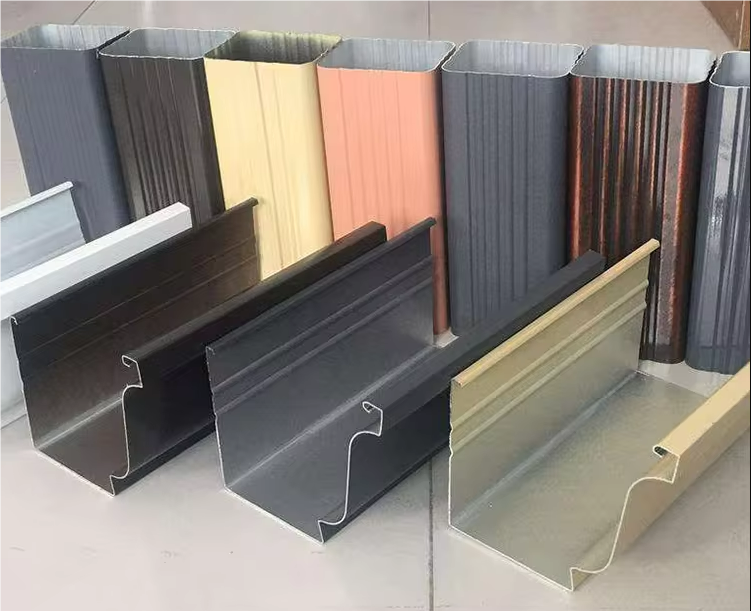Gutters play a crucial role in protecting your home by directing rainwater away from your foundation, walls, and roof. Choosing the right gutter system, especially for a metal roof, is essential to ensure long-term durability and effectiveness. Below are the key aspects you need to consider when installing gutters for a metal roof.
1. Choosing Appropriate Gutters for a Metal Roof
When selecting gutters for a metal roof, it’s important to consider factors like material compatibility, durability, and the roof’s unique water runoff patterns. Here are some important tips:
- Material Compatibility: Ensure the gutter material is compatible with the metal roof to prevent corrosion. For example, aluminum or zinc gutters work well with most metal roofing, while copper gutters are compatible with copper roofing but can react negatively with other metals like steel.
- Size and Shape: Metal roofs typically have a smoother surface, causing water to flow off quickly. To accommodate this, choose wider gutters (e.g., 6-inch rather than standard 5-inch) to handle higher water volumes during heavy rain.
- Snow Guards: If you live in areas with snowfall, consider installing snow guards on the roof. These will prevent snow from sliding off the metal roof all at once and potentially damaging the gutters.
- Hidden Fasteners: Select gutters with hidden fasteners or brackets to avoid interference with the clean look of a metal roof and ensure a stronger hold.
2. What Are Metal Guttering Made Of?
Metal guttering systems are typically made from the following materials:
- Aluminum: The most common gutter material due to its affordability, lightweight nature, and resistance to rust. It’s easy to work with and available in a variety of colors and finishes.
- Steel: Galvanized or stainless steel gutters are strong and can handle harsh conditions but may rust over time if not properly maintained or coated.
- Copper: A premium option, copper gutters are highly durable and develop a beautiful patina over time. They are often used for historic or high-end homes and are resistant to corrosion.
- Zinc: Zinc gutters are also a high-end option that offers durability and corrosion resistance, with a natural patina that develops over time. They require minimal maintenance but come at a higher cost.
- Galvalume: A blend of steel, aluminum, and zinc, galvalume gutters provide excellent corrosion resistance and durability, making them a good match for metal roofs.
3. What Does the Metal Guttering Manufacturing Process Look Like?
The manufacturing process for metal gutters involves several key steps:
- Raw Material Sourcing: The selected metal (aluminum, steel, copper, etc.) is sourced in large coils.
- Roll Forming: The metal is passed through a gutter roll forming machine. This machine shapes the flat metal into specific gutter profiles, such as K-style or half-round, which are popular shapes for residential gutter systems.
- Cutting and Shaping: The continuous length of gutter is then cut to custom sizes, depending on the specific roof dimensions. The roll forming process can be done on-site or at the factory.
- Coating (if applicable): For materials like steel or aluminum, a protective coating or paint is applied to improve durability and weather resistance. Copper and zinc gutters, on the other hand, are often left untreated to allow for their natural patina to develop over time.
- Quality Control: Once formed and coated, the gutters undergo quality checks to ensure they meet industry standards and are free from defects.

4. Purchasing Metal Guttering
When purchasing metal gutters, it’s important to consider not just the material but also other aspects such as:
- Sizing: Ensure that the gutter size and downspout capacity are appropriate for your roof’s surface area and climate. Wider gutters are recommended for areas prone to heavy rainfall.
- Length and Sections: Decide whether you need seamless or sectional gutters. Seamless gutters, often made from aluminum, are cut to the exact length of your roof, reducing the risk of leaks. Sectional gutters are easier to install but may have more joints, which can become points of leakage over time.
- Finish and Color: Gutters come in various colors and finishes, so choose a style that complements your home’s exterior. Aluminum gutters are often pre-painted, while copper and zinc develop natural finishes over time.
- Gutter Guards: Consider purchasing gutter guards or leaf screens, especially if your home is surrounded by trees. This helps prevent clogs and reduces maintenance.
5. Assembling the Perfect Gutter System for Your Home
To ensure your gutter system performs optimally, here’s how to assemble the perfect gutter setup:
- Design the Layout: Plan the layout based on your roof’s slope and drainage requirements. Strategically place downspouts at corners or areas where water flow is highest.
- Slope the Gutters: Properly slope your gutters (about 1/4 inch for every 10 feet) to ensure water flows smoothly toward the downspouts and doesn’t pool in the gutters.
- Secure with Strong Fasteners: Use high-quality brackets and fasteners to secure the gutters to your home. Hidden fasteners provide a clean look and are highly recommended for metal roofs.
- Add Downspouts: Downspouts should be installed every 30 to 40 feet, or where significant roof runoff occurs. Ensure they direct water at least 6 feet away from the home’s foundation to prevent water damage.
- Install Gutter Guards: To reduce the need for frequent cleaning, install gutter guards to block debris like leaves and twigs from entering the gutters.
- Regular Maintenance: Even with high-quality materials, regular inspection and maintenance (especially after storms) will extend the lifespan of your gutters.
Conclusion
Installing the right gutter system for your metal roof ensures effective water management and long-term protection for your home. By choosing durable materials, considering appropriate sizing, and following a well-thought-out installation process, you can create a functional and aesthetically pleasing gutter system that complements your metal roof and enhances your home’s overall resilience.


